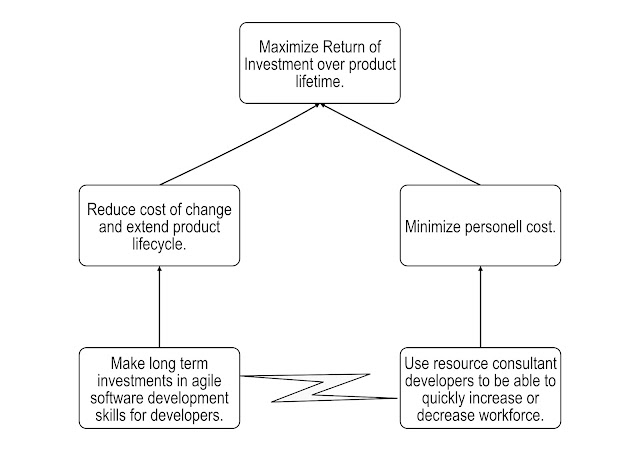IO Map for Process Design

I had reason to think about how to design processes recently, and just for fun I drew the Intermediate Objective map you see above. This is a process level IO map. It shows the necessary conditions that must be fulfilled in order to have a good process design.
The map is meant to be generic, so you may have to adapt it to fit a special situation. In most cases, it can be used as is. Note though, that one of the necessary conditions for creating a good process is understanding how the goal of the process furthers the goal of the organization using the process. In other words, you need an IO map for the organization (or equivalent) in order to create a good process.
I won't write a long-winded article with a detailed explanation of the map, at least not for now. However, if you have any questions, don't hesitate to ask.



Comments
Beautiful IO map! Thank you for posting it.
I sense an implication of standardized work (related to reducing variation) but that connection is not made explicit.
Do you think that standardized work is necessary or would this IO map work equally well for processes dealing with highly customized work products?
(I originally wrote a much longer article, where I applied the map to a very wide range of problems, from making sure there is always a pot of coffee available at a café to improving the chances of the United Nations achieving their Millenium Development Goals. Kind of went all over the place, so I scrapped it in the end.)
There is one problem with the map: it is intended both as a work tool (check list, basis for measurement system design, starting point for The Logical Thinking Process) for process developers, and as a pedagogical tool when discussing process design with non-experts. That may be one purpose too many.
For a non-expert, the terminology is difficult to understand, and what one does not understand, one tends to dismiss as unimportant.
I considered making a somewhat simpler map to show clients, but then I would have to explain to clients why the process I designed for them does not quite correspond to the map I showed them.
Better to face the problem head on, and trust the client to be smart and interested.
(I saw a strategy book last Friday, where the authors had "simplified" John Boyd's OODA loop to make it easier to understand. Unfortunately, it also became utterly useless. In the end, I think I made the right choice with the IO map.)